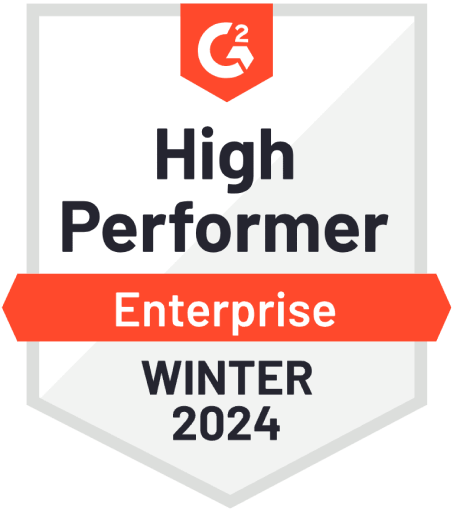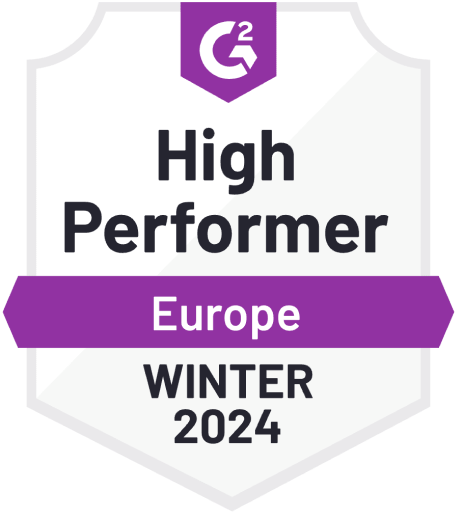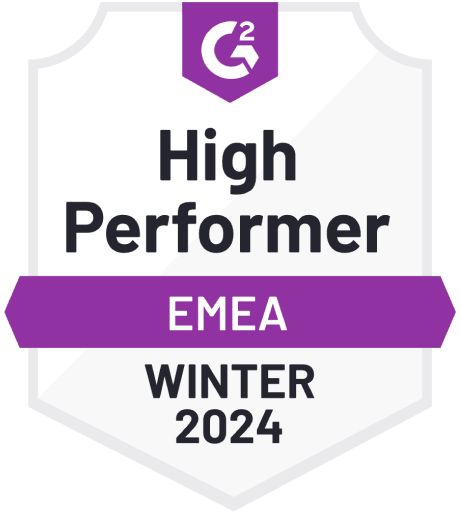The Top 5 Accounts Payable Trends in 2024
6 minutes read
Published on 20-02-2024
Accounts payable has always been at the forefront of financial innovation and this year won’t be any exception. With the pace of technological change accelerating and organizations looking for opportunities to improve efficiency across their operations, 5 key trends will be driving the way you approach AP in the next 12 months. In this article we’ll be exploring how they might affect you and what steps you can take to make the most of the opportunities they represent.
1. Global economic and geopolitical uncertainty continues
Continuing a trend in 2024, global disruption will be a key factor in decision decision-making across all organizations. And AP will be no exception. High interest rates, a possible recession, and ongoing volatility are all pushing businesses to focus on their liquidity and cash needs. More than ever, AP teams will be called upon to help organizations preserve their working capital and cash outflow by automating their workflows to combat inefficiencies and optimize payment cycles.
How can AP teams do this?
- Use automated AP and payment processes to optimize DPO : using automation to control DPO allows your organization to reduce staff and storage costs, radically reduce or even eliminate paper documents from the process, and enables your processes to scale seamlessly as your business grows and changes.
- Optimize your vendor payment landscape: where possible, bundle multiple payments and pay your vendors strategically based on your business needs. This means doing everything you can to capture discount opportunities where they arise and ensuring you pay your key vendors early to strengthen critical components of your supply chain.
- Prevent leakage to control costs: overpayment, duplicate payments, and fraud all contribute to avoidable cost inefficiencies. Keeping on top of simple errors like this will be essential to optimizing your cash outflow and working capital positions.
2. AI is transforming AP – with significant implications for the way your teams work and for your talent strategy
AI will significantly change finance over the coming months – and will do so faster than most other disciplines. This is because finance is a data-intensive function particularly suited to full automation in many areas. AI-enabled solutions can process data quickly and without error with minimal need for human input, and routine processing tasks can be automated entirely based on historical information.
In addition, trends and risks can be analyzed and detected much faster and more accurately by AI than they can by humans, and forecasting models can be kept up-to-the-minute by AI monitoring that quickly adapts them to changing conditions and new data input.
The advancement of AI will completely transform the way your teams need to perform by reducing manual work on core processes and allowing your teams to pivot to more strategic work. AP will move from a transactional processing center to a strategic business partner and ally to the CFO, supporting tasks like strategic vendor management programs, supporting cash planning forecasting, and ensuring compliance.
But achieving this will require you to pay a much closer eye to talent retention, as top performers will be an essential component of both AP transformation success and digital transformation success.
3. E-Invoicing mandates will transform the way we handle invoice processing
The “VAT gap” is coming to be seen as a priority for governments worldwide. Inefficient/erroneous VAT collection is an international problem, costing an estimated €93bn to the EU in 2022 and with an estimated total global cost of around €500bn. Over 50 countries have now instituted mandates to address the VAT gap, with others, including France, Poland, and Spain, to follow in 2024.
AP teams will need to enable digital transformation to meet their finance processing and global tax compliance needs – especially considering these and other e-invoicing mandates, which specify a compliant format for structured digital invoices to help close the VAT gap and prevent tax errors or avoidance.
To help you adapt to this huge change to the way your vendors and your AP teams will be expected to operate, Serrala’s global AP Automation solution provides global visibility and centralized control over AP processes and e-invoice formats.
Moreover, our compliance partner Sovos connects your AP processes to more than 60 tax administrations covering B2B and B2G requirements and CTC models with a secure and certified near-real-time connection. This maintains ongoing compliance and provides you with updates on important impending changes to keep you informed.
4. Managing the Move to SAP S/4HANA
More than 1/3 of companies have made are or in the process of moving to S/4HANA ahead of SAP’s planned mandatory move in 2027. While this may seem like a distant point in the future if you’re currently an on-prem SAP customer, it’s worth bearing in mind that a major change to your ERP implementation will always require a great deal of preparation and groundwork to remove roadblocks and ensure a smooth transition.
It's best to think of the move to S/4HANA as more than an IT project, but as a major strategic transformation that will affect all aspects of business processes too – including finance and AP.
According to SAP, user groups will need finance experts involved in the planning for digital transformation. On top of this, you’ll need to start planning how you’ll maximize return on investment in SAP by optimizing finance processes as you move to S/4HANA principally by examining the way you currently use your SAP solution to:
- Identify and eliminate customizations.
- Standardize, digitize, automate and extend processes as needed for S/4HANA.
- Determine your transformation roadmap and resources .
- Decide how and when you’re going to engage with expert solution partners – who understand how best to build business processes using S/4HANA.
5. Cloud will become the core of AP solutions and processes
With digital transformation, many companies will move to the cloud for the many benefits it provides in terms of scalable architecture and automation potential.
For SAP customers, there are two cloud options: private cloud (RISE with SAP) or public cloud (GROW with SAP). Which cloud option you choose will determine how you manage your AP processes.
Finance and AP teams should understand the benefits of moving to the cloud as well as some of its limitations and constraints.
As a whole, cloud solutions can be accessed anywhere, scaled and extended infinitely, and provide an agile, secure foundation for your organization’s business processes. They also benefit from automatic updates so you know you’re always on the latest and most stable version of a solution at all times.
Public cloud solutions are standardized , and are limited in how much they can be extended. This means that they’re usually simpler to implement and maintain and always have the most innovative features. On the downside, however, they’re often less flexible and can’t be adapted to unique business processes (unless your provider maintains pre-built industry models for your specific niche needs).
Private cloud solutions are more flexible, with the downside that it may take time to benefit from the latest SAP innovations because they are mainained independently from their public cloud counterparts. Among SAP customers, private cloud has been the choice for many larger enterprises that are migrating from SAP ECC to S/4HANA. Companies can easily move their existing data, processes, and capabilities from SAP ECC to S/4HANA in the cloud and extend the solution using apps and services available on the SAP Business Transaction Platform (BTP) to meet their unique business needs.
SAP BTP opens up possibilities to tailor AP processes to your business, such as adding flexible invoice approval options, automate e-invoicing compliance activities, or offer vendors a self-service portal, while ensuring you maintain a “clean core” in your SAP system environment. Using the BTP you can connect to cloud capture solutions, integrate legacy or custom systems, and extend processing with e-invoicing, banking, or payment service providers.

Ready to learn more?
Serrala solutions are designed to create a coherent, end-to-end ecosystem for your invoice-to-pay processes that simplifies your accounting workflows and allows for full working capital optimization. To learn more about how we can help you revolutionize your approach to accounts payable – and how our solutions can streamline and automate every part of the process for greater efficiency, transparency, and decision velocity, check out our resource pages here or click here to book a demo.
Related content
Unleashing the Power of AI: Finance Automation for CFOs
Join us for an exciting webinar series as we delve into the transformative potential of AI in the finance world, hear insights and discover lessons on integrating AI into the financial landscape.
Jabil and the secret to automating 2 million invoices annually through AP automation
Award-winning solutions for financial automation
As pioneers in financial automation, Serrala offers a highly powerful and flexible suite of solutions that have successfully empowered finance teams all over the world to optimize and modernize their financial processes.



